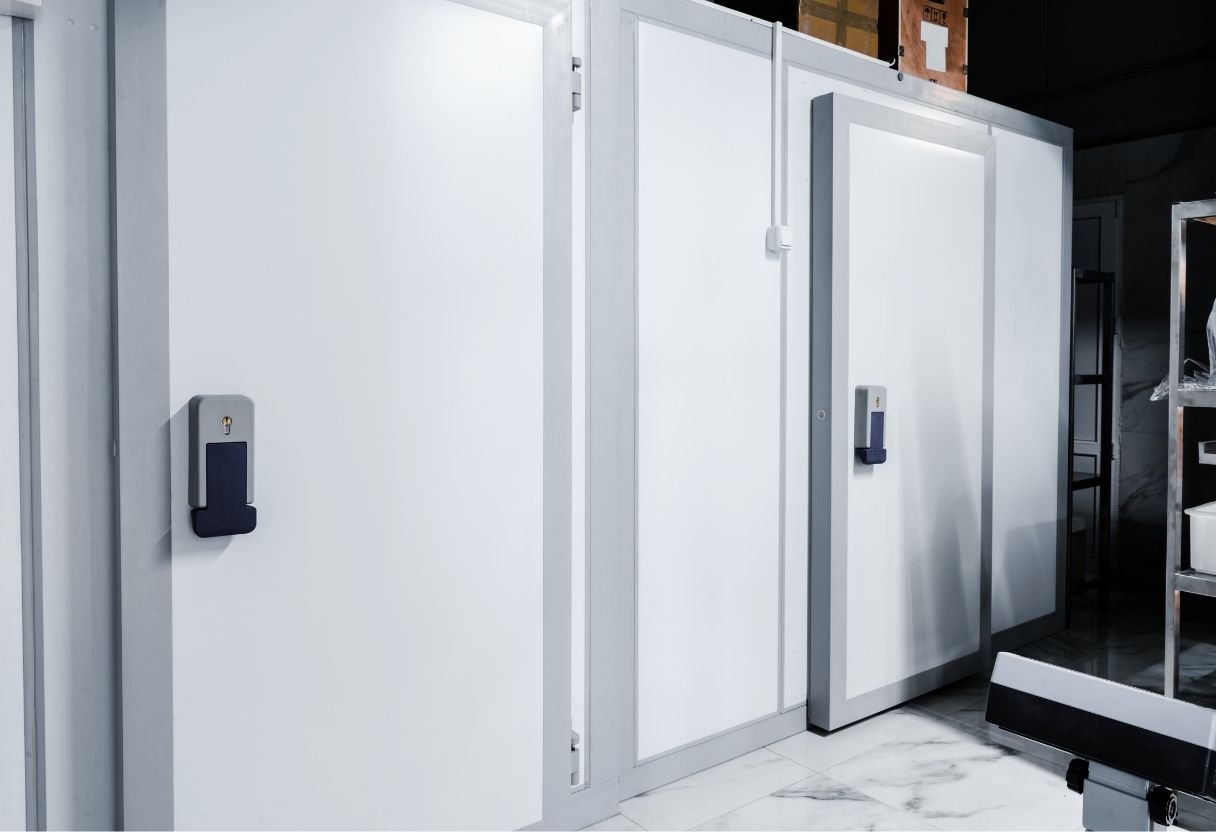How Sustainable Cooling can Lower Your Emissions and Expenses

Sushi, fish fry, and paella feature seafood as the star ingredient, but how often have we stopped to understand how that fish got to our plate? The cold chain, the process of chilling food from harvest to table, is expected to reach $447.50 billion by 2025 – a 15.1% growth rate from 2019 (ReportLinker). With the cold chain growing worldwide, its subsequent carbon footprint will increase and intensify the effects of climate change. The next generation of cold chain operations must include progressive solutions to avoid product loss, support energy efficiency, and prevent toxic refrigerant leaks.
You can listen to our CEO's take on the matter.
The growth of the cold chain
A multi-billion dollar and growing industry, the cold chain is barely on the climate movement’s radar, yet its evolving impact on the environment is undeniable. Consider the salmon in your freezer. Before arriving at your local Costco, the fish traveled thousands of miles through refrigerated ships and trucks, temperature-regulated storerooms, food processing plants, and distribution centers. The ocean-to-table cold chain process exemplifies the incredible complexity, energy demand, and cooling technologies fresh food requires to get from its origin to our tables. The cold chain has revolutionized how we eat by making fresh fruits and vegetables available at all times of the year.
Sustainable cooling's climate impact
Increased access to fresh foods improves peoples’ health worldwide, but the impact of expanding the cold chain industry could devastate our environment. According to the US Environmental Protection Agency, cold chain industry emissions make up 3% of total global emissions. While this number may seem insignificant, cooling appliances are responsible for over 97.8% of all HFC emissions. Because the cold chain is expanding rapidly, especially in developing nations, emissions will continue to increase.
Toxic leaks
The cold chain industry contributes to climate change in three major categories: food waste, energy consumption, and potent emission leaks. Refrigerant emissions, thought to be eradicated by the international Montreal Protocol treaty of 1987, are the climate movement’s most underestimated challenge. The ozone-depleting chemical, CFC, was discontinued after the radical Montreal Protocol, and the protocol replaced those chemicals with HFC chemicals. While not ozone-depleting, HFCs have a warming potential of 9,000 times that of carbon dioxide, and the only source is human activity. In 2018, the US emitted 167.8 million metric tons of carbon dioxide equivalent from HFC chemicals. That many tons impact the same as driving from San Diego to Anchorage 120,000 times (US EPA).
The refrigerant leak problem lacks awareness in the mainstream climate action conversation, but Project Drawdown shows sustainable cooling technologies are the fourth most important solution to our warming world. Properly managing refrigerant chemicals can potentially reduce CO2 emissions by 57.7 gigatons from 2020 to 2050. This massive impact from a minor fix in the cold chain system is an innovation well within our reach. Still, cooling equipment owners prioritize profits over sustainability, limiting their interest in sustainable development goals.
Wasted resources
Food waste comes at a stunning economic cost – the UN estimates that the annual impact of food waste on the economy is approximately $450 billion. In the US, about 12% of food waste occurs due to inappropriate refrigeration (NRDC). In addition to the economic cost, Project Drawdown identifies food waste reduction as the most potent solution we can implement now to keep global warming within planetary boundaries. This strategy could prevent 87.4 gigatons of CO2-equivalent greenhouse gas emissions from 2020 to 2050. By catching inefficiencies and using data to manage the cold chain before problems arise, managers will encounter fewer mistakes in cooling. That improved awareness can avoid enormous sunk costs from product loss, feed safe food to more people, and reduce the amount of waste in landfills that emit greenhouse gases.
Sustainable cooling prevents emissions and promotes energy efficiency
A widely adopted climate mitigation method is applying a business model that includes energy efficiency. It’s simple to implement, and building owners can easily see the economic benefits. Updating old appliances, investing in the most efficient options, and seeking regular repairs are much more cost-effective. Besides personal benefits, energy efficiency has one of the most significant impacts on total emissions reduction (EIU). In an average household, appliances and air conditioning or heating make up about 13% and 46% of full energy use, respectively (Direct Energy). Climate-friendly cooling systems and air conditioners require less electricity, providing substantial cost savings.
Passive cooling, like ventilation, can also be an acceptable space cooling method. However, continuing urbanization and rising global temperatures are causing higher numbers of heatwaves, the heat island effect that occurs over urban areas. With those and other extreme heat events increasing our cooling needs, the demand for efficient cooling methods will become more apparent.
The cold chain is a lucrative industry, yet there are still expensive inefficiencies in the system that, if addressed, could further improve stakeholders’ bottom lines. Sustainable cooling solutions that protect food integrity, enhance energy efficiency and address expensive chemical leaks consider the environmental costs in tandem with the economical prices of the cold chain. It’s the responsibility of business owners, governments, and policymakers to expand current efforts to replace energy sources like fossil fuels with renewable energy to include the cold chain in environmental reformation.
GlacierGrid and Sustainable Cooling
For more information on how GlacierGrid can help your business operate more efficiently and sustainably - and how we support clean energy cooling efforts - request a demo with a GlacierGrid representative.








